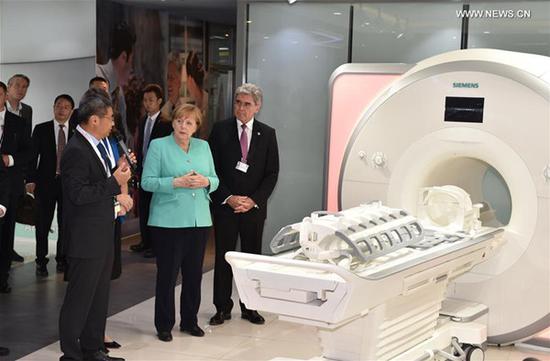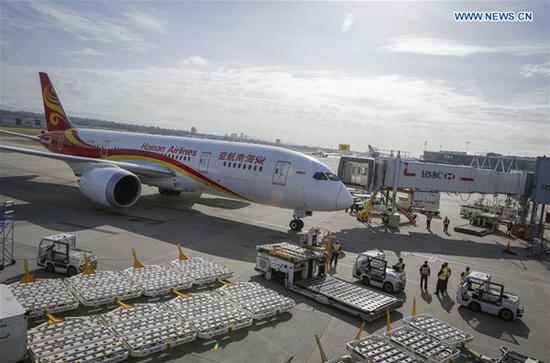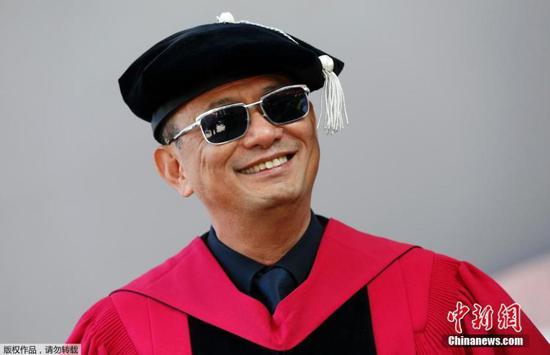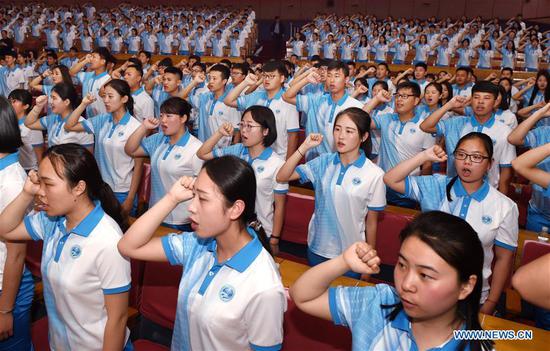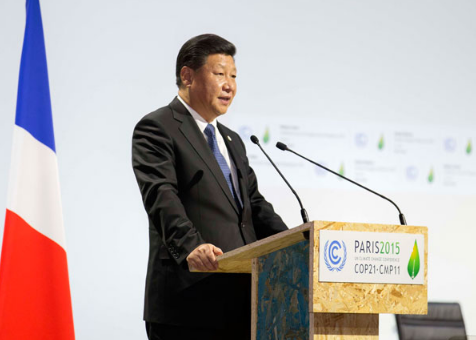
President Xi Jinping delivers a speech for the opening day of the World Climate Change Conference 2015 (COP21) at Le Bourget, near Paris, France, November 30, 2015.(Photo/Xinhua)
China's next centennial goal is to mark the 100th anniversary of the founding of the People's Republic of China in 2049 by establishing a "great modern socialist country in every dimension". By then everyone in China will have achieved a level of "common prosperity" and the country will be a global leader in terms of national strength and international influence.
Xi also set out a completely new target in his report, that for 2035, at the halfway point between the two centennial targets. Key to this target is addressing the environmental degradation that has resulted from the industrialization of the economy in the country's first phase of modernization since reform and opening-up.
Also important is reducing the disparities between urban and rural development and giving people from deprived communities greater access to public services.
China has also set itself the goal that within 17 years, it will become a global technology leader. My own recent visits to East China's Anhui province, where pioneering work in quantum communications is being carried out, Dalian in Northeast China and Chongqing in Southwest China, have only confirmed the extent of the efforts on the ground to meet this new national goal.
Cai Rui, the 41-year-old deputy director of Dalian Institute of Chemical Physics of the Chinese Academy of Sciences, one of China's national-level science institutes, told me in January that local governments are now knocking on the door of institutes such as his to advance the national technology effort.
There has been an exponential rise in the number of STEM (science, technology, engineering and mathematics) graduates in China. According to the World Economic Forum, China had the highest number of such graduates in the world in 2016 at 4.7 million, more than eight times the 568,000 in the US.
There has always been a somewhat patronizing view overseas that Chinese science PhD students lack the quality of those in the West and are best suited to rote tasks, but this is something that has now to be seriously questioned.
It is the prospect of the US being a laggard in key technologies that is behind many of the tensions that now exist between the world's two largest economies. As Michael Spence, Nobel Prize winner and professor of economics at New York University's Stern School of Business, says, being behind in digital technologies, which will be central to defense and security, would be uncomfortable to the US. "I think China is on the way there (to being ahead) and I don't really know how to predict the American response."
For now, the US and Europe still lead in many major technologies but with the momentum of the new era, China has the potential to catch up quite rapidly. Any resistance or attempt to isolate China seems a futile strategy and there may soon to be a realization that partnering and collaborating with China is the only way forward-as already seems to be the consensus with Europe.
Higher-quality growth model
The success of the new era depends on economic reform, as Xi made clear in October, when he said the "principal contradiction" of China's development had to evolve.
In the 40 years since Deng Xiaoping launched reform and opening-up that contradiction had been between "the ever-growing material and cultural needs of the people and backward social production".
It was essentially resolved by introducing market reforms that led to China becoming the manufacturing workshop of the world as well as its second-largest economy.
Xi says the aim now is to address a new principal contradiction, "that between unbalanced and inadequate development and people's ever-growing needs for a better life". To do that, it needs to move toward a higher-quality growth model and away from one dependent just on manufacturing exports and infrastructure investment.
To achieve that goal, China needs to focus on continued supply-side reform, cutting excess capacity, particularly in State-owned enterprises, and reducing income and regional inequalities. It also needs to tackle pollution, improve the regulatory and administrative environment, and ensure greater financial stability, including dealing with the issue of debt in the economy.









